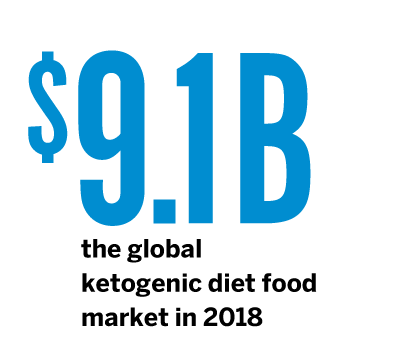Keto Veto
Debunking the “miracle diet” and going long Starbucks

Anyone whose fitness goals include weight loss, fat loss, a set of sculpted abs, an express ticket to Shredsville or a body transformation so radical their friends won’t recognize them should achieve a caloric deficit. Period. End of discussion.
This article could end right there because that statement alone will get people riled up. But let’s press on.
Is a caloric deficit the only approach to fitness? No. But is it the first goal to pursue? Absolutely.
Some readers may be thinking otherwise. “If I don’t eat carbs all day,” they’re telling themselves, “I’ll be super skinny in days… weeks… minutes! In fact that’s what Kourtney Karadashian, Thomas Delauer and just about everyone else who’s on the internet blogging or vlogging about fitness would lead the public to believe.
With express apologies to the Kardashian family (see pages 10 & 64), that’s not how it works. Legions of YouTubers are promoting a ketogenic diet – a high-fat, adequate-protein, low-carbohydrate regime – that forces the body to burn fats instead of carbohydrates. Most call it keto.
But doing, going, embracing, enduring or surviving keto doesn’t magically set body fat on fire. It’s not some witches brew that’ll zap blubber into a bubbling cauldron.
Keto diet was the most search diet 2018 according to Google Trends
Some might reply, “I Google it, and the results are amazing!” Well, they really aren’t.
About 99% of the keto studies, results, anecdotes or old wives’ tales fail to acknowledge calories. Virtu- ally eliminating an entire macronutrient from one’s diet tends to create a caloric deficit, even after 11 strips of bacon at breakfast and butter-soaked prime rib as a mid-morning snack.
The truth is that once calories (and protein) are isolated – like the researchers at Arizona State University did back in 2006 – there’s no difference in fat loss between diets that are high fat-low carb and diets that are moderate fat-moderate carb.
Zip. Zilch. Nada.
The truth is that keto isn’t magic. It’s math. Eliminating carbs isn’t fairy dust. It’s math. Now some might feel that avoiding bread is shrinking their love handles and that chucking cereal is slimming their waistlines, but those actions aren’t more important than the caloric deficit. Breakups with Sara Lee and General Mills are passengers on the road to Shredsville – not drivers.
Not convinced?
This is really no different from stepping in and selling the 30 delta Put in Starbucks Corp. (SBUX). Investors have about a 70% probability of success on that trade.
Period. End of discussion.
Ah, Starbucks…it’s an unmatched experience! The baristas have smiles stapled to their faces, and the tall latte macchiato with almond milk is bursting with 18,000 milligrams of caffeine for the (un)reasonable price of $8.17. Sure, the Mayo Clinic recommends no more than 400 milligrams daily and the average citizen of Burundi lives on less than $1 a day, but that doesn’t diminish consumers’ enthusiasm for the coffee chain. “Probabilities be damned,” some may be thinking because the pleasurable excesses of Starbucks suggest an inevitable down move. “There’s no way this Put loses!”

Yes, so many love Starbucks. But the markets are pricing in a 70% success rate on the Put. And herein lies the beauty of options. They’re priced to perfection and governed by probabilities. Regardless of how one feels or thinks, the markets offer objective information.
They’re true. They’re pure. They’re unbiased.
To believe anything else would be akin to thinking that keto possesses special fat-burning properties or extraordinary fat-blasting powers that trump the laws of nature. It’s just not true.
Jim Schultz, a derivatives trader, fitness expert, owner of livefcubed.com and the daily host of From Theory to Practice on the tastytrade network, was named a North American Natural Bodybuilding Federation’s 2017 Novice Bodybuilding Champion. @jschultzf3



















